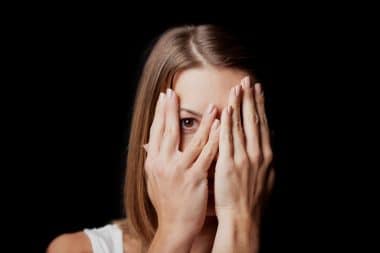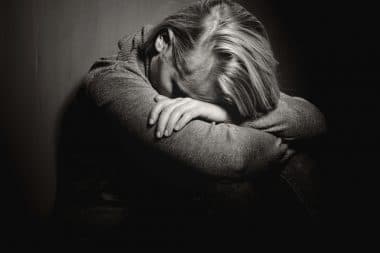What Is Seasonal Affective Disorder and How Do You Deal With It?
Seasonal affective disorder (SAD) is often associated with depressive and bipolar disorders. In fact, such seasonal changes have a lot to do with human psychology and are typical for the majority of people. Days getting shorter affects people’s daily biorhythm and suppresses the production of certain hormones in their bodies. Some people, especially elderly individuals, are particularly prone to it due to being abnormally susceptible to cold and lack of sunlight.
Overcast weather and longer nights make humans sleep and eat a little more than they really need to. They are often reluctant to get up in the morning, preferring to stay in bed a little longer. Seasonal changes are also accompanied by mood swings, though cases of SAD are less frequent in spring and summer. Insomnia, anxiety, irritability, absence of appetite, and weight loss are typical for this kind of depression. A feeling of hopelessness and inability to derive pleasure from life are the two common symptoms for patients suffering from SAD.
Seasonal fluctuations in vital functions are typical for all warm-blooded animals, and humans are no exception to this rule. In winter, their metabolism and motor activity tend to slow down substantially. In spring and summer, physiological processes become more intensive. According to scientists, biorhythms of all living beings directly depend on a particular season of the year, lunar cycles, and weather conditions. That’s why many warm-blooded creatures sleep a lot during winter months.
SAD: Ailment or Syndrome?
According to the International Classification of Diseases (ICD), SAD is considered one of the major depressive and bipolar affective disorders. Moreover, according to psychiatrists, it is not even an independent diagnosis. The term “seasonal affective disorder” is often used to refer to a periodic shift in biorhythms and winter lethargy. It confuses many people and makes them think they have some severe mental problems requiring medicines and professional assistance.
However, SAD differs from ordinary melancholy due to having more serious symptoms. Overeating leads to excessive weight, and that is particularly true of carbohydrate-rich foods. Persons with SAD suffer from lack of energy and have trouble focusing on more than one activity. They can also deliberately avoid their friends and family members, having no desire at all to communicate with them. If you have too many assignments in college and you feel SAD creeping up on you, you should simply buy college papers and give yourself a much-needed break.
A therapist or psychiatrist can easily diagnose SAD if an individual meets the four below criteria:
- Depressive episodes appear regularly at a particular season of the year;
- Remissions in the case of a major depressive disorder or a mania in the case of bipolar disorder;
- Seasonal disorders last more than two years, excluding depressive episodes caused by other reasons;
- Affective seasonal periods occur more often than other types of depression.
Modern medicine also distinguishes Subsyndromal Seasonal Affective Disorder (SSAD), which is an SAD’s subtype. All the said criteria help diagnose it, but only an experienced psychotherapist or a psychiatrist can do it quickly and professionally.
What Causes SAD?
The exact causes of seasonal affective disorders are yet to be discovered. The first one to describe SAD symptoms was professor Norman E. Rosenthal, who did that in his book called “Winter Blues.” In it, he cited the slowing down of serotonin production, insensitivity of eyes to light, and abnormal circadian rhythms as the main manifestations of the disorder. Also, Mr. Rosenthal noticed that some people with SAD might have pathologies in the genes responsible for the distribution of serotonin or oversensitivity of the retina (caused by impaired production of melanopsin, which is a retinal pigment).
Scientists tend to attribute cyclic changes in mood and behavior of individuals to genetic predisposition. SAD is most common in areas where bright days in winter are infrequent, or the amount of daylight significantly changes at different times of the year. A significant part of the population living in extreme northern and southern latitudes suffer from a syndrome which may manifest itself in depression, fatigue, hypersomnia, polyphagia, weight gain, and decreased libido.
How Do You Deal with SAD?
Medical treatment of SAD is required only in extreme cases. It is possible to talk about it in terms of a disease if the process becomes chronic and very severe. SAD treatment may include light therapy (phototherapy), medications, and psychotherapy. So, if your sleep pattern and appetite have changed, you often drink alcohol for relaxation, or you get suicidal thoughts, you are strongly advised to see a doctor.
However, the best remedies for the light forms of SAD are the simplest ones – plenty of sunlight, sports, proper diet, healthy sleep, and socialization. Individuals with SAD or SSAD should feel attention, care, and love of their next of kin. Seasonal affective disorder, as well as its lighter version, aren’t mainly treated in the therapist’s office, nor in the hospital.
Let’s take a look at ten ways in which you can cope with seasonal depression without medical assistance.
1. Enjoy Any Season
Every season, including autumn and winter, has something special about it. Try spending more time outside – walk, do sports, and hang out with your friends. Learn to enjoy any kind of weather, and you’ll see your life improve dramatically.
2. Wear Bright Clothes
You may have noticed that houses in countries with a cold climate are mostly multi-colored. Bright colors can cheer you up and lift your spirits. If you can’t afford a red jacket right now, why not start with bright socks?
3. Take Vitamin D
People get all the vitamin D they need by simply being in the sun. Less sunlight means fewer vitamins. Therefore, taking vitamin D in winter and autumn is an excellent idea. It is recommended that adults should get at least 5,000 IUs (International Units) of vitamin D every day.
4. Watch Movies and Read Books
Winter and autumn are a great time to catch up on movies you might’ve missed. Also, you can read books that you planned to read a long time ago. If you like video games, you can install a couple on your PC and play them to your heart’s content. Just do not get carried away and do not forget about your number one priority, namely your friends, job, and studies.
5. Communicate with Positive People
A lot of psychological studies show that communicating with positive-minded people is beneficial for a person’s general well-being. Of course, it is always nice to be able to discuss politics, but it would be much nicer to look for positive emotions when the weather is bad.
6. Try Learning Something New
Students rarely suffer from winter depression. Their brain is too busy dealing with new information. There is also a scientific explanation for this phenomenon – even our grandmothers knew that a busy bee has no time for sorrow. If you already outgrew a college age, it’s never too late to learn something new this winter.
7. Start a New Project
You can effectively deal with your winter depression by starting some big project. It can be anything – from doing some work around the house to putting your and your family members’ financial and legal affairs in order.
8. Eat Seasonal Food
If you enjoy cooking, winter is a great time to experiment with some new, unusual, and, certainly, seasonal recipes. For example, pumpkins have a lot of magnesium and potassium in them, while eggplants contain plenty of fiber, copper, vitamin B1, and manganese.
9. Use Sunlight Lamps
Sunlight lamps are very effective for treating SAD. As it was mentioned above, winter depression is often caused by physiological reasons, and lack of sunlight is one of the key mechanisms triggering negative processes in your brain. Typically, a lamp like this should be switched on for an hour a day, and preferably in the morning.
10. Sit by the Fire
The fire has a powerful soothing effect on human beings. You are lucky if you have a fireplace or stove at your place. However, having a few lit candles on the table can turn dinner with a person you love into a very special event.








Reply